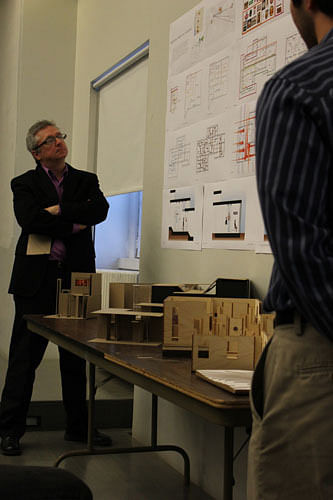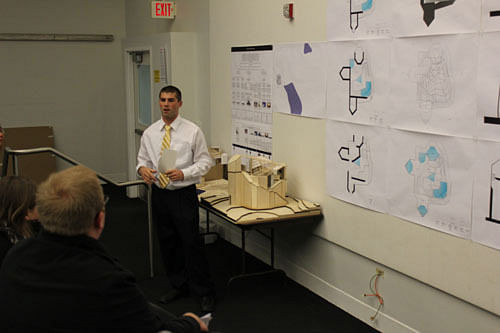
Contributed By: Gabrielle Printz
This studio, led by Joyce Hwang, asked first year graduate students to consider the collection conceptually, spatially, and in relation to a culture of excess. Walter Benjamin describes the process of assembling the material collection in his 1916 essay “On Language as Such and on the Language of Man”:
The most profound enchantment for the collector is the locking of individual items within a magic circle in which they are fixed as the final thrill, the thrill of acquisition, passes over them . . . The period, the region, the craftsmanship, the former ownership—for a true collector the whole background of an item adds up to a magic encyclopedia.
The collection is thus defined by its wholeness or completeness, an assemblage of material goods that, together, defines a new, more whole entity. Considering this fundamental concept, students were asked to curate and define a set of found artifacts, classifying and contextualizing them in reference to American excess and the discarded object.
 Above Image: Catalog excerpt from “Postscript”
Above Image: Catalog excerpt from “Postscript”
For most students, this involved conceptual issues about the secondary life of the object: new uses, reuse, or extended use. Other projects dealt with issues of artifactuality and what it means to elevate refuse to an object of exhibition. In both cases, students were challenged to think about how the object (and the collection) might be experienced by a body in space.
Given the varied backgrounds of the ARC501 students, responses to both the concept of the collection and the spatial ramifications thereof were quite different. Collections ranged from motherboards and mirrors to manuscripts, seeds and the common Campbell’s soup can. Accordingly, those diverse collections rendered quite different architectural responses.
 Above Image: Peter Foti presents “Ping,” a project based on a network of old computers, classified according to an extended use life-cycle.
Above Image: Peter Foti presents “Ping,” a project based on a network of old computers, classified according to an extended use life-cycle.

Nicholas Batson’s project “Wandering Under the Influence,” (above) sets a collection of old beer and bar signs from their defunct establishments in a labyrinthine configuration. Using unsettling visual effects and changes in floor plane, the scheme attempted to replicate the effects of drunkenness as the user navigates through it.
 Kurt Stavdal’s project (above) dealt with a working collection of old entertainment equipment, which he housed in individual subspaces for the specific sensory experience each device provided (aural and visual).
Kurt Stavdal’s project (above) dealt with a working collection of old entertainment equipment, which he housed in individual subspaces for the specific sensory experience each device provided (aural and visual).

Above Image: Dirk Tempelman presents a collection of Macintosh motherboards, assembled in hanging stacks, in ascending order by decade. They are set in a central gallery surrounded by a series of trampoline-like floor planes, meant to suggest the mutability and dynamism of this technological artifact, as it has developed over time. His project also addressed the possibility for growth, with the roof physically ascending to accommodate newer motherboards.

Jesse Pringle’s “A Growing Collection” (above) also dealt with an expectation for growth, but in a much more literal way. In curating a collection of seeds, the architecture he produced fell somewhere between building and landscape, with gabions designed to hold the seeds, the trees and plants that they yield, as well as both human and animal inhabitants.

My own project (above), “Postscript,” considered the discarded manuscript as the collected object, a material referent to another person. The resultant spatial configuration consisted of an arrangement of specially-designed modules to hold each document open to 120 degrees, a direct reflection of the average span of the human gaze. Depending on the nature of the manuscript and its content (how open, how intimate), the objects were arranged in a way to either reveal or occlude their contents to different viewers (the gallery visitor or the collector herself).
Learn more about the research and creative activities of our enterprising students and faculty. At the School of Architecture and Planning, we engage with our local and global communities to push the boundaries of our disciplines and innovate the professions of architecture and planning.
No Comments
Block this user
Are you sure you want to block this user and hide all related comments throughout the site?
Archinect
This is your first comment on Archinect. Your comment will be visible once approved.